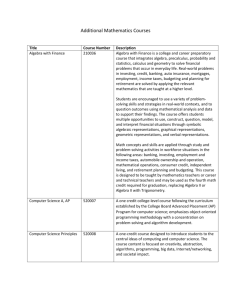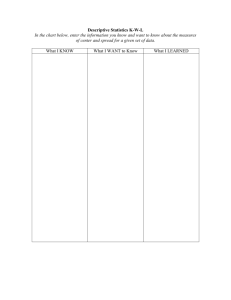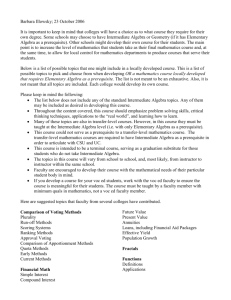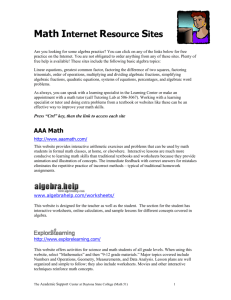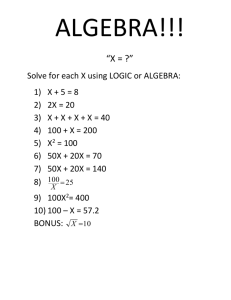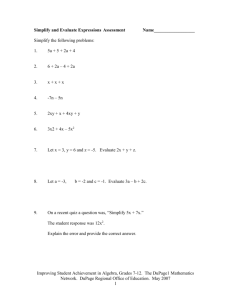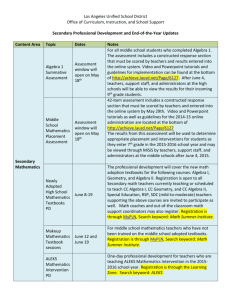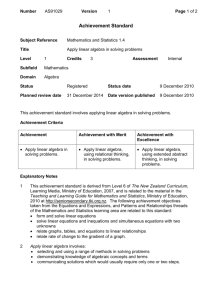MT-A315- Introduction to Linear Algebra
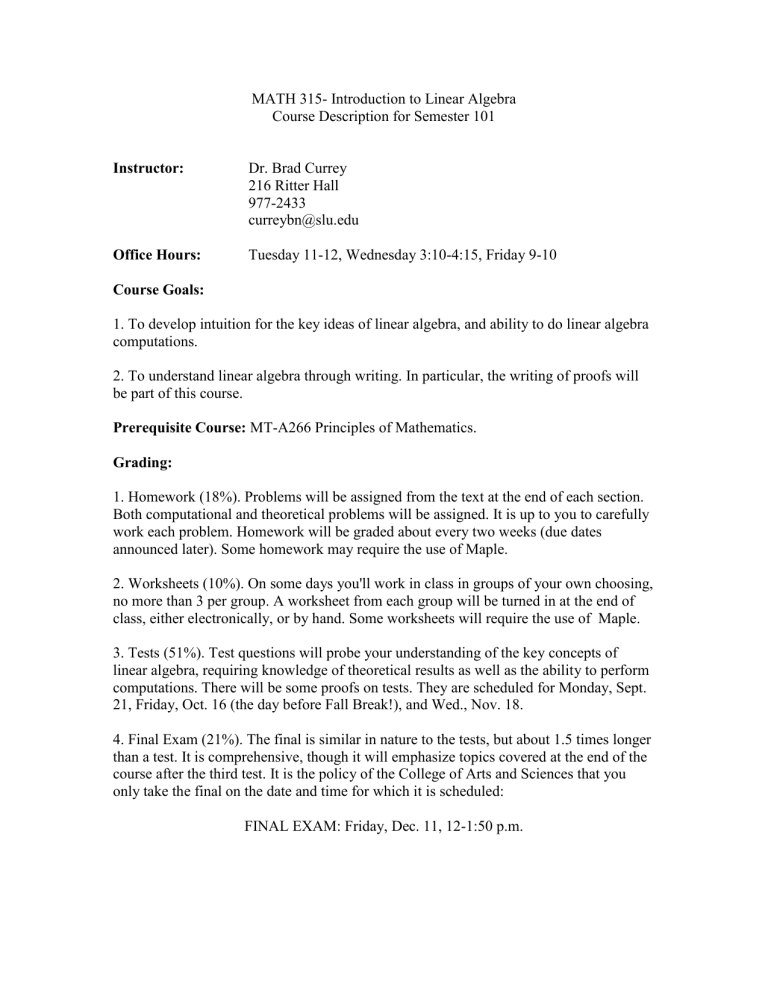
MATH 315- Introduction to Linear Algebra
Course Description for Semester 101
Instructor: Dr. Brad Currey
216 Ritter Hall
977-2433 curreybn@slu.edu
Office Hours: Tuesday 11-12, Wednesday 3:10-4:15, Friday 9-10
Course Goals:
1. To develop intuition for the key ideas of linear algebra, and ability to do linear algebra computations.
2. To understand linear algebra through writing. In particular, the writing of proofs will be part of this course.
Prerequisite Course: MT-A266 Principles of Mathematics.
Grading:
1. Homework (18%). Problems will be assigned from the text at the end of each section.
Both computational and theoretical problems will be assigned. It is up to you to carefully work each problem. Homework will be graded about every two weeks (due dates announced later). Some homework may require the use of Maple.
2. Worksheets (10%). On some days you'll work in class in groups of your own choosing, no more than 3 per group. A worksheet from each group will be turned in at the end of class, either electronically, or by hand. Some worksheets will require the use of Maple.
3. Tests (51%). Test questions will probe your understanding of the key concepts of linear algebra, requiring knowledge of theoretical results as well as the ability to perform computations. There will be some proofs on tests. They are scheduled for Monday, Sept.
21, Friday, Oct. 16 (the day before Fall Break!), and Wed., Nov. 18.
4. Final Exam (21%). The final is similar in nature to the tests, but about 1.5 times longer than a test. It is comprehensive, though it will emphasize topics covered at the end of the course after the third test. It is the policy of the College of Arts and Sciences that you only take the final on the date and time for which it is scheduled:
FINAL EXAM: Friday, Dec. 11, 12-1:50 p.m.
Policies:
1. Please have your homework ready when you come to class on the due date. If your homework is late, there will be a 10% penalty for each day that it is late. Worksheet credit will be given only if you are present in class.
2. There are no make-ups for missed tests. A missed test will result in a score of zero being averaged in. Some special consideration may be given in case of an emergency. An emergency is defined as being an event that is verifiable, unpredictable, and out of your control. It would be my judgment as to whether an emergency occurred and warrants special consideration.
3. When I hand back a graded test in class, I will announce cutoff scores for each possible letter grade A, A-, B+, B, etc. for that test. These cutoff scores, together with cutoff scores for the final, homework, and worksheets, are then averaged at the end of the course to compute a cutoff score for each possible course grade.
4. If your final exam percentage is higher than that of your lowest test, then the final exam percentage will be substituted for that of the lowest test.
Course Plan:
We will follow the text “Linear Algebra: Ideas and Applications” (Third Edition), by
Richard C. Penney. Chapters 1 and 2 are huge; we will do portions of Chapters 3-6 after covering 1 and 2 really carefully.
A remark on the process of mathematics: math is learned by doing examples and by thinking about what you are doing. If I want to understand a new mathematical concept, the first thing I do is try to find a specific example of a mathematical object(s) that I am familiar with that illustrates this concept. The purpose of a lot of the problems at the end of each section is to help you with this, so when you are doing an exercise, try to see how it illustrates a concept from the section.
There is another kind of problem that you will find at the end of each section: proof problems. Use logic, and methods from the course Principles of Mathematics, to figure out how to write these proof. Personally, I usually have to revise and rewrite when I am trying to write a proof, and I am a pretty typical case! Writing proofs is an essential part of creating new mathematics, and is a great way to learn how to communicate logical ideas.
I acknowledge that the prerequisite course for MT-A315 Introduction to Linear Algebra is MT-A266 Principles of Mathematics. I also acknowledge that Dr. Currey believes that it is very important that a student pass MT-A266 with a grade of “C” or higher, in order to be prepared for MT-A315.
Student:_________________________________________
Academic Advisor: _____________________________________________


